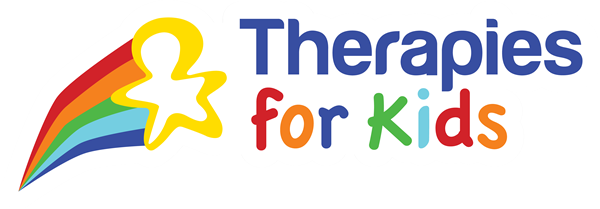What is it ?
Stuttering affects the fluency of speech. It begins during childhood and, in some cases, lasts throughout life. The disorder is characterized by disruptions in the production of speech sounds, also called “dysfluencies.” Most people produce brief disfluencies from time to time. For instance, some words are repeated and others are preceded by “um” or “uh.” Disfluencies are not necessarily a problem; however, they can impede communication when a person produces too many of them.
In most cases, stuttering has an impact on at least some daily activities. The specific activities that a person finds challenging to perform vary across individuals. For some people, communication difficulties only happen during specific activities, for example, talking on the telephone or talking before large groups. For most others, however, communication difficulties occur across a number of activities at home, school, or work. Some people may limit their participation in certain activities. Such “participation restrictions” often occur because the person is concerned about how others might react to disfluent speech. Other people may try to hide their disfluent speech from others by rearranging the words in their sentence (circumlocution), pretending to forget what they wanted to say, or declining to speak. Other people may find that they are excluded from participating in certain activities because of stuttering. Clearly, the impact of stuttering on daily life can be affected by how the person and others react to the disorder.
What are signs and symptoms of stuttering ?
Stuttered speech often includes repetitions of words or parts of words, as well as prolongations of speech sounds. These disfluencies occur more often in persons who stutter than they do in the general population. Some people who stutter appear very tense or “out of breath” when talking. Speech may become completely stopped or blocked. Blocked is when the mouth is positioned to say a sound, sometimes for several seconds, with little or no sound forthcoming. After some effort, the person may complete the word. Interjections such as “um” or “like” can occur, as well, particularly when they contain repeated (“u- um- um”) or prolonged (“uuuum”) speech sounds or when they are used intentionally to delay the initiation of a word the speaker expects to “get stuck on.”
Some examples of stuttering include:
- “W- W- W- Where are you going?” (Part-word repetition: The person is having difficulty moving from the “w” in “where” to the remaining sounds in the word. On the fourth attempt, he successfully completes the word.)
- “SSSS ave me a seat.” (Sound prolongation: The person is having difficulty moving from the “s” in “save” to the remaining sounds in the word. He continues to say the “s” sound until he is able to complete the word.)
- I’ll meet you – um um you know like – around six o’clock.” (A series of interjections: The person expects to have difficulty smoothly joining the word “you” with the word “around.” In response to the anticipated difficulty, he produces several interjections until he is able to say the word “around” smoothly.)
Identifying stuttering in an individual’s speech would seem like an easy task. Disfluencies often “stand out” and disrupt a person’s communication. Listeners can usually detect when a person is stuttering. At the same time, however, stuttering can affect more than just a person’s observable speech. Some characteristics of stuttered speech are not as easy for listeners to detect. As a result, diagnosing stuttering requires the skills of a certified speech-language pathologist (SLP).
What causes stuttering ?
The exact cause of stuttering is unknown. Recent studies suggest that genetics plays a role in the disorder. It is thought that many, if not most, individuals who stutter inherit traits that put them at risk to develop stuttering. The exact nature of these traits is presently unclear. Whatever the traits are, they obviously impair the individual’s ability to string together the various muscle movements that are necessary to produce sentences fluently.
Not everyone who is predisposed to stutter will develop the disorder. For many, certain life events are thought to “trigger” fluency difficulty. One of the triggers for developmental stuttering may be the development of grammar skills. Between the ages of 2 and 5 years, children learn many of the grammatical rules of language. These rules allow children to change immature messages (“Mommy candy”) into longer sentences that require coordination to produce fluently (“Mommy put the candy in my backpack”). A child who is predisposed to stutter may have no difficulty speaking fluently when sentences are only one or two words long. However, when the child starts trying to produce longer, more complex sentences, he or she may find himself or herself not quite up to the challenge-and disfluent speech results.
After stuttering has started, other factors may cause more disfluencies. For example, a child who is easily frustrated may be more likely to tighten or tense speech muscles when disfluencies occur. Such tension may increase how long a disfluency lasts. Listeners’ responses to stuttering (e.g., teasing) can aggravate fluency difficulties as well. People who stutter vary widely in how they react to the disfluencies in their speech. Some appear to be minimally concerned. Others-especially those who have encountered unfavourable reactions from listeners-may develop emotional responses to stuttering that hinder speech production further. Examples of these emotions include shame, embarrassment, and anxiety.
What we can do….
During an evaluation, our SLP will:
- note the number and types of speech disfluencies your child produces in various situations.
- assess the ways in which the person reacts to and copes with disfluencies.
- gather information about factors such as teasing that may make the problem worse.
- do other assessments (e.g., speech rate, language skills)
The information gathered is then analysed to determine whether a fluency disorder exists. If so, the extent to which it affects the ability to perform and participate in daily activities is determined.
For young children, it is important to predict whether the stuttering is likely to continue. An evaluation consists of a series of tests, observations, and interviews designed to estimate the child’s risk for continuing to stutter. a family history of stuttering Risk factors to be considered include:
- stuttering that has continued for 6 months or longer
- presence of other speech or language disorders
- strong fears or concerns about stuttering on the part of the child or the family
For older children an evaluation consists of:
- tests
- observations
- interviews that are designed to assess the overall severity of the disorder.
- assessment of the impact the disorder has on the child’s ability to communicate and participate appropriately in daily activities
Information from the evaluation is then used to develop a specific treatment program, one that is designed to:
- help the child speak more fluently
- communicate more effectively
- participate more fully in life activities
What treatments are available for stuttering ?
Most treatment programs for people who stutter are “behavioral.” They are designed to teach the person specific skills or behaviors that lead to improved oral communication. For instance, many SLPs teach people who stutter to control and/or monitor the rate at which they speak. In addition, people may learn to start saying words in a slightly slower and less physically tense manner. They may also learn to control or monitor their breathing. When learning to control speech rate, people often begin by practicing smooth, fluent speech at rates that are much slower than typical speech, using short phrases and sentences. Over time, people learn to produce smooth speech at faster rates, in longer sentences, and in more challenging situations until speech sounds both fluent and natural. “Follow-up” or “maintenance” sessions are often necessary after completion of formal intervention to prevent relapse.
What you can do…
Often, people are unsure about how to respond when talking to people who stutter. This uncertainty can cause listeners to do things like look away during moments of stuttering, interrupt the person, fill in words, or simply not talk to people who stutter. None of these reactions is particularly helpful, though. In general, people who stutter want to be treated just like anybody else. They are very aware that their speech is different and that it takes them longer to say things. Unfortunately, though, this sometimes leads the person to feel pressure to speak quickly. Under such conditions, people who stutter often have even more difficultly saying what they want to say in a smooth, timely manner. Therefore, listeners who appear impatient or annoyed may actually make it harder for people who stutter to speak.
When talking with people who stutter, the best thing to do is give them the time they need to say what they want to say. Try not to finish sentences or fill in words for them. Doing so only increases the person’s sense of time pressure. Also, suggestions like “slow down,” “relax,” or “take a deep breath” can make the person feel even more uncomfortable because these comments suggest that stuttering should be simple to overcome, but it’s not!
Of course, different people who stutter will have different ways of handling their speaking difficulties. Some will be comfortable talking about it with you, while others will not. In general, however, it can be quite helpful to simply ask the person what would be the most helpful way to respond to his or her stuttering. You might say something like, “I noticed that you stutter. Can you tell me how you prefer for people to respond when you stutter?” Often, people will appreciate your interest. You certainly don’t want to talk down to them or treat them differently just because they stutter. However, you can still try to find a matter-of-fact, supportive way to let them know that you are interested in what they are saying, rather than how they’re saying it. This can go a long way toward reducing awkwardness, uncertainty, or tension in the situation and make it easier for both parties to communicate effectively.
What causes stuttering ?
The exact cause of stuttering is unknown. Recent studies suggest that genetics plays a role in the disorder. It is thought that many, if not most, individuals who stutter inherit traits that put them at risk to develop stuttering. The exact nature of these traits is presently unclear. Whatever the traits are, they obviously impair the individual’s ability to string together the various muscle movements that are necessary to produce sentences fluently.
Not everyone who is predisposed to stutter will develop the disorder. For many, certain life events are thought to “trigger” fluency difficulty. One of the triggers for developmental stuttering may be the development of grammar skills. Between the ages of 2 and 5 years, children learn many of the grammatical rules of language. These rules allow children to change immature messages (“Mommy candy”) into longer sentences that require coordination to produce fluently (“Mommy put the candy in my backpack”). A child who is predisposed to stutter may have no difficulty speaking fluently when sentences are only one or two words long. However, when the child starts trying to produce longer, more complex sentences, he or she may find himself or herself not quite up to the challenge-and disfluent speech results.
After stuttering has started, other factors may cause more disfluencies. For example, a child who is easily frustrated may be more likely to tighten or tense speech muscles when disfluencies occur. Such tension may increase how long a disfluency lasts. Listeners’ responses to stuttering (e.g., teasing) can aggravate fluency difficulties as well. People who stutter vary widely in how they react to the disfluencies in their speech. Some appear to be minimally concerned. Others-especially those who have encountered unfavourable reactions from listeners-may develop emotional responses to stuttering that hinder speech production further. Examples of these emotions include shame, embarrassment, and anxiety.




